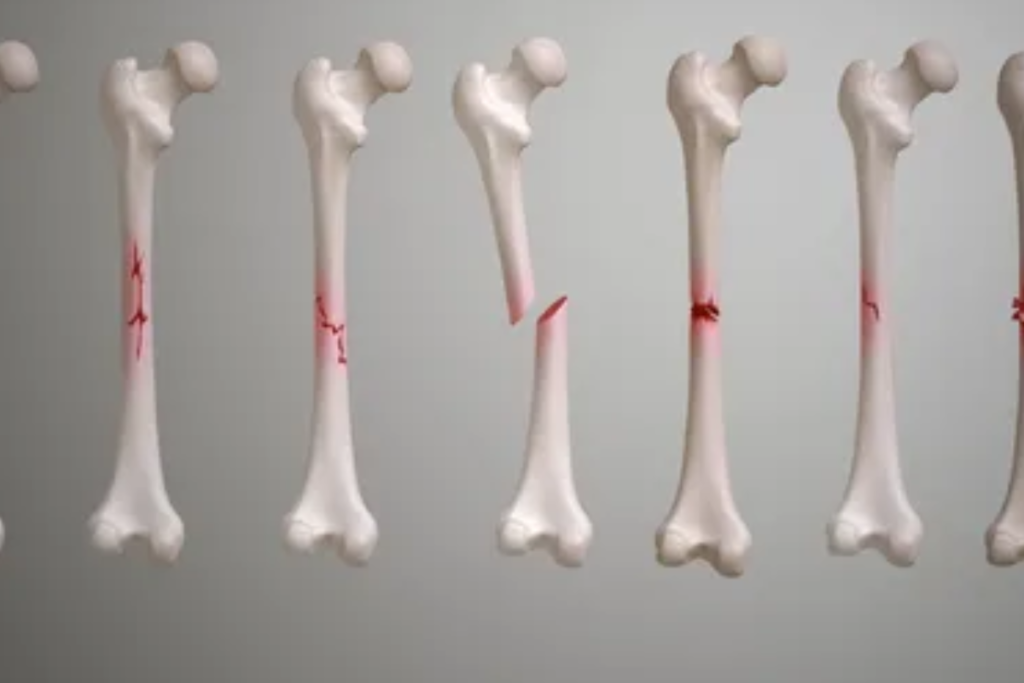
A bone fracture, often referred to simply as a broken bone, is a common injury that can occur due to various reasons such as trauma, falls, sports injuries, or medical conditions like osteoporosis. The treatment for bone fractures depends on the type and severity of the fracture, as well as the patient’s age and overall health. Here’s a detailed look at the different types of bone fractures and their respective treatment options:
Types of Bone Fractures
- Closed Fracture (Simple Fracture):
- This type of fracture occurs when the bone breaks but does not penetrate the skin.
- Treatment: Typically, treatment involves immobilization using a cast or splint to support the bone and promote proper healing.
- Open Fracture (Compound Fracture):
- In an open fracture, the broken bone pierces through the skin, leading to a higher risk of infection.
- Treatment: Immediate medical attention is crucial to clean the wound and stabilize the bone. Surgery may be required to align the bones properly and prevent infection.
- Greenstick Fracture:
- Common in children, a greenstick fracture occurs when a bone bends and cracks but does not completely break.
- Treatment: Often treated with a cast to hold the bone in place until it heals completely.
- Comminuted Fracture:
- This type of fracture occurs when the bone breaks into several pieces or fragments.
- Treatment: Surgery is usually necessary to realign the bone fragments and stabilize them with plates, screws, or rods.
- Stress Fracture:
- Stress fractures are tiny cracks in the bone, often caused by repetitive stress or overuse.
- Treatment: Rest is crucial to allow the bone to heal. Sometimes, immobilization with a cast or walking boot may be necessary.
- Avulsion Fracture:
- An avulsion fracture occurs when a small piece of bone breaks off where a tendon or ligament attaches to the bone.
- Treatment: Treatment may include rest, immobilization, and in some cases, surgery to reattach the bone fragment.
Treatment Options
- Immobilization:
- For most types of fractures, immobilization with a cast, splint, or brace is essential to keep the bone in place while it heals.
- Medication:
- Pain relievers and anti-inflammatory medications may be prescribed to manage pain and reduce inflammation during the healing process.
- Physical Therapy:
- After the initial healing phase, physical therapy may be recommended to restore strength, flexibility, and function to the injured area.
- Surgery:
- Surgery may be necessary for complex fractures to realign the bones, stabilize them with internal fixation devices (such as plates, screws, or rods), or repair soft tissue damage.
- Bone Grafting:
- In cases of severe fractures where bone loss has occurred, bone grafting may be performed to help regenerate new bone tissue.
- Electrical Stimulation:
- In some instances, electrical stimulation therapy may be used to promote bone healing, especially in fractures that are slow to heal.
Summary
The treatment of bone fractures varies widely depending on the type and severity of the injury. From simple immobilization with a cast to complex surgical procedures, the goal is always to ensure proper alignment and healing of the bone to restore function and prevent long-term complications. For expert care and treatment of bone fractures in Pune, Pradhikaran, & Thergaon, consult with Dr. Ashish Suryawanshi, recognized as the Best Orthopedic doctor in Pune. Visit Dr. Ashish Suryawanshi’s website for more information and to schedule an appointment.
This blog aims to provide comprehensive information on bone fractures and their treatments, ensuring that individuals understand the importance of prompt and appropriate medical care in achieving optimal recovery and long-term bone health.




